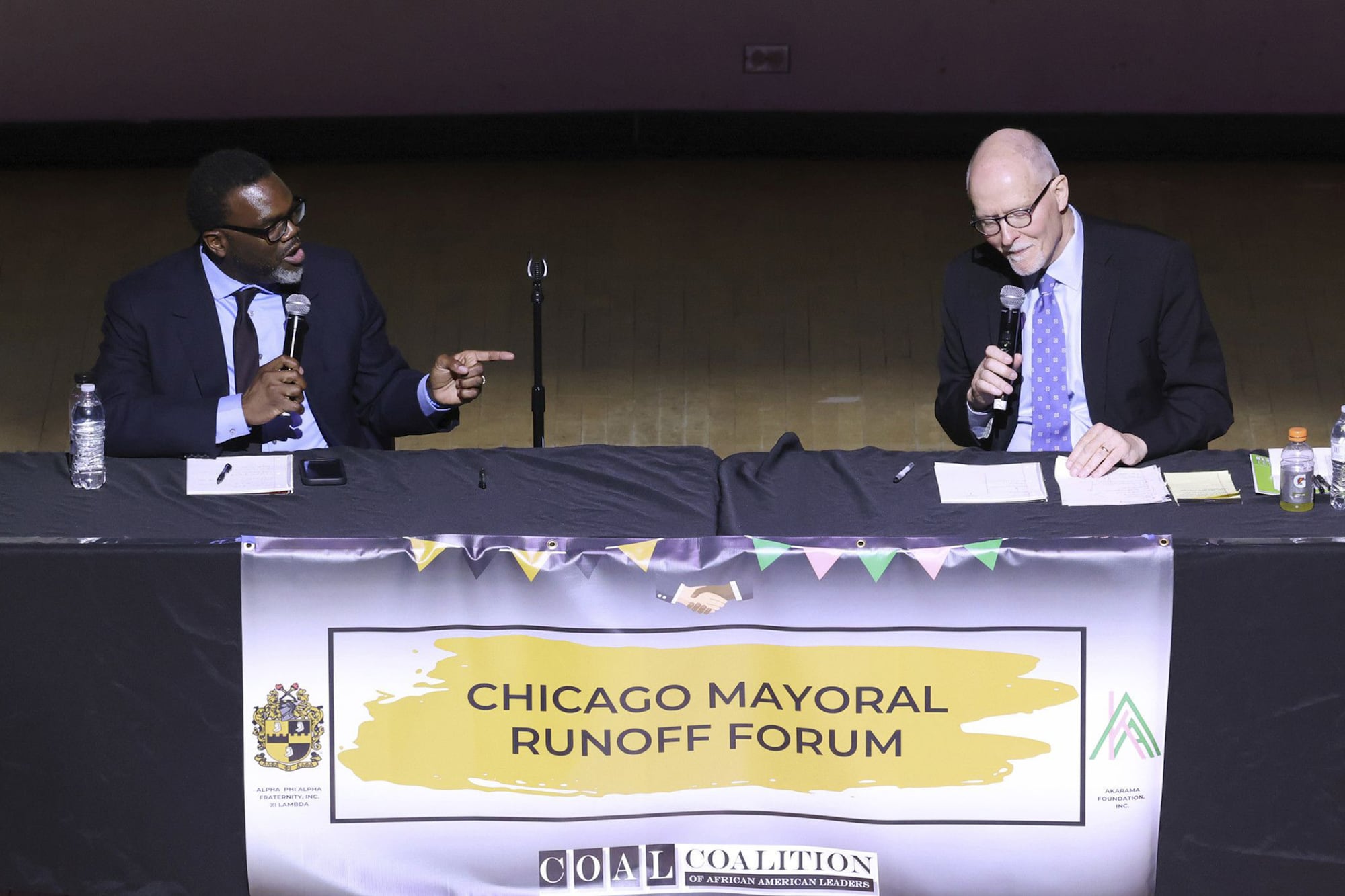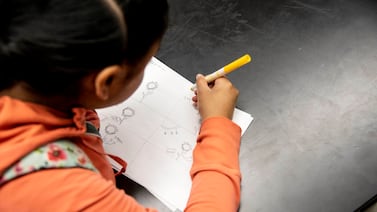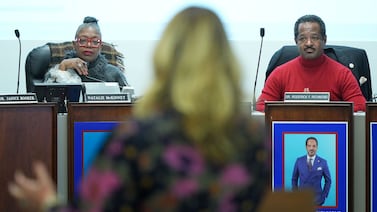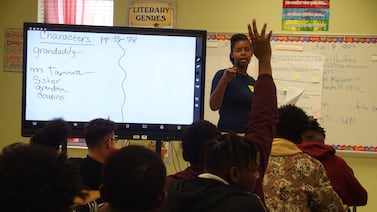Public education in Chicago is about to enter a new era, defined by the person elected mayor on April 4.
Voters will choose between Brandon Johnson, a former middle school teacher turned county commissioner who is also an organizer with the Chicago Teachers Union, or Paul Vallas, a former city budget director and Chicago Public Schools CEO turned education consultant.
Either candidate would bring more knowledge and experience in Chicago Public Schools to the job than most, if not all, previous mayors. It’s nearly impossible to untangle their identities from the debates over public education policy during the past two decades that have left Vallas and Johnson with different perspectives on critical education issues.
“You have two people who really come to this position largely as a result of their work in education,” said Robert Bruno, professor of labor and employment at University of Illinois.
Johnson has roots as a labor organizer and progressive politician focused on improving the lives of working class and low-income people. Vallas is a technocrat and policy wonk who built a career as a “fixer” and “turnaround specialist” for large, complex school systems.
Those experiences will shape their responses to the once-in-a-generation challenges and opportunities facing the nation’s fourth largest school district. The next mayor will write the final chapter in Chicago’s story with mayoral control, appointing school board members as the district shifts toward an elected school board. He will grapple with declining enrollment as federal COVID recovery money runs out and will negotiate the next Chicago Teachers Union contract.
Perhaps most importantly, the next mayor will shape how more than 300,000 students are educated — after three years of pandemic disruption and decades of inequity.
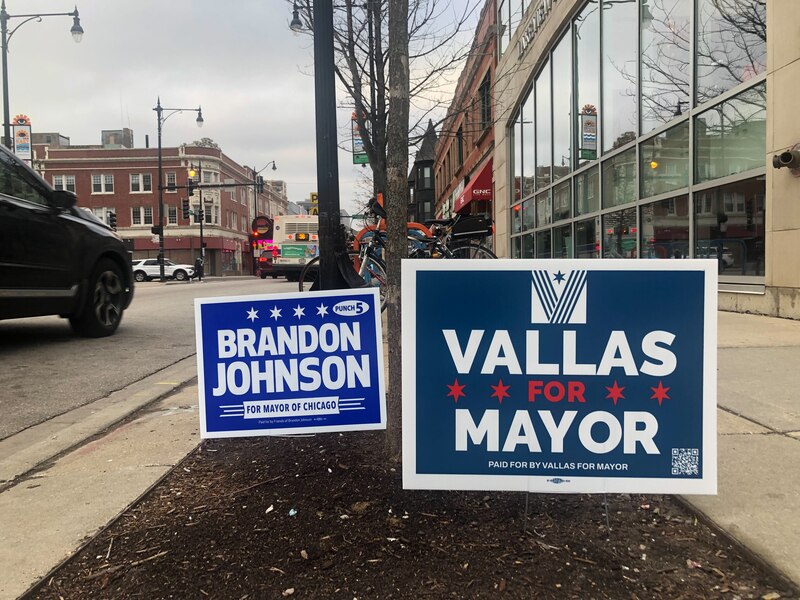
The challenge ahead: Moving to an elected school board
Chicago’s era of mayoral control will end in 2027, when the next mayor is up for re-election. Vallas or Johnson’s first term will be a period of transition in which he will oversee the school system and still appoint more than a dozen school board members, ahead of and during the transition to an elected school board.
If voters pick Johnson, his election would be the crowning achievement in a decade-long grassroots battle waged by the Chicago Teachers Union against mayoral control and many of the controversial policies that came with it, like school closures and charter expansion. Johnson opposes adding charter schools and closing small district schools, of which Chicago has a growing number.
Vallas would bring a long history of expanding school choice and remaking big-city school districts. He’s signaled his approach wouldn’t precisely mirror the past, though, and recently said Chicago had enough charter schools.
They have also expressed different priorities for future board member appointments. Vallas has said he would endorse candidates for school board who align with his vision for the district. He also told Chalkbeat that he would work with the school board “as an equally elected official that is representing the needs of the community that elected them.”
Johnson, who advocated for the legislation creating the school board, has said he wants it to represent Chicago’s diverse neighborhoods “who are deeply invested and knowledgeable” about the communities they serve.
“We cannot have uber rich, arch-conservatives usurping the power that working people in Chicago fought so hard to win,” he told Chalkbeat in a questionnaire published earlier this year.
Reversing enrollment declines in a changing city
Chicago has lost more than 100,000 students since Vallas was schools chief.
When he left the job in 2001, there were roughly 435,000 students. Now, there are just over 322,000. Because schools are largely funded based on enrollment, this trend puts pressure on the district’s budget, even as Illinois has overhauled and increased funding for public education.
Creg Williams, a Vallas supporter who worked with him in Chicago, Philadelphia, and New Orleans, said the mayoral hopeful has experience re-enrolling students. After Hurricane Katrina hit, public school enrollment dropped from 65,000 students to 25,000, according to Louisiana state records.
“When we got to New Orleans, there were no student records, there were no teachers, there were no students,” Williams said. “We drove up and down streets, recruiting children who were walking up and down the streets with no place to stay, no schools to go in.” (Enrollment did increase under Vallas’ tenure in New Orleans, but it did not return to pre-Katrina levels.)
Chicago’s declining enrollment, like many cities across America, is driven not by a natural disaster but rather by declining birth rates and a confluence of factors pushing people to leave the city, including the loss of public housing, gentrification, crime, and past school closures.
These are problems the school system cannot fix by itself. City Hall, which has control over zoning, tax policy, and economic development, will play a key part.
Both candidates have talked a lot about making the city a place families want to live, but offer different paths for getting there. Vallas says neighborhoods need to be safe above all else and is proposing a crime-fighting strategy that staffs up the police department and keeps school buildings open on nights and weekends. Johnson has promised not to raise property taxes and wants to grow jobs for both the parents of public school students, and for teens and young adults.
Working with fewer federal dollars and a looming fiscal cliff
Those promises will cost money, and the next mayor will need to find it.
Last week, district officials warned that Chicago Public Schools is facing $600 million-plus budget deficits beginning in 2026, when a $2.8 billion windfall of COVID recovery money ends.
“These issues have been papered over by federal support, but we need to confront them head on,” district CEO Pedro Martinez said recently.
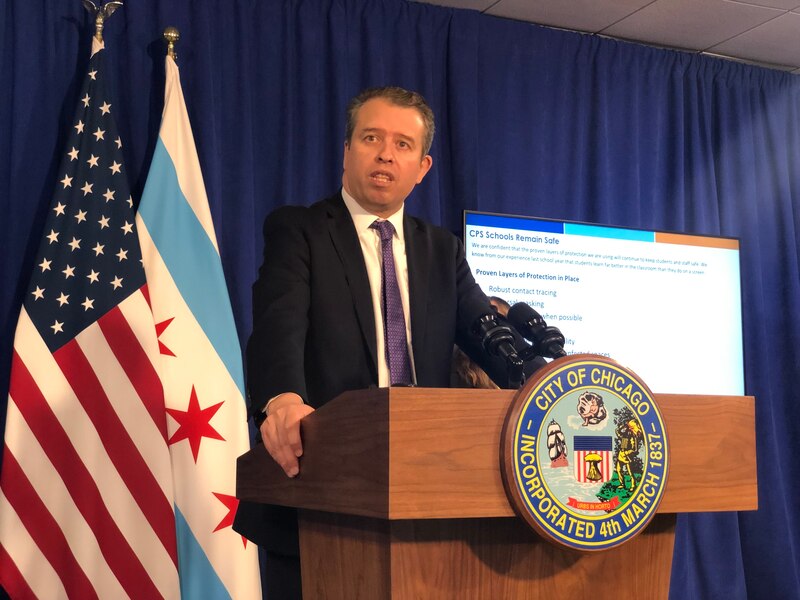
Johnson has said he will not raise property taxes, a primary source of funding for local schools. Vallas has not ruled out property tax increases, but has talked about pushing more money down to individual schools and cutting costs at the central office.
The mayor has other options.
Johnson has talked about getting state lawmakers to ramp up funding increases to the state’s funding formula so Chicago and all districts get to so-called “adequate funding” more quickly.
He – and district officials – have also suggested pushing the state to kick in more for Chicago teachers pensions, which have been underfunded since the mid- to late-2000s. Chicago Public Schools began skipping annual payments to the pension fund in 1995 under Vallas, and did so until 2004. When the 2008 financial crisis hit, state lawmakers again allowed the district to skip pension payments. Today, the fund is less than 50% funded and requires much larger annual payments, which also puts pressure on the district’s budget.
The next mayor could also undo decisions made by current Mayor Lori Lightfoot to shift costs for police in schools, crossing guards, and non-teaching staff pensions from the city’s budget to Chicago Public Schools. Neither candidate has signaled they would reverse those cost shifts.
Bargaining a high-stakes contract
The Chicago Teachers Union’s current contract expires in 2024. If history is any guide, negotiations will begin this winter under the leadership of the new mayor. Two of the last three contracts were settled only after teachers went on strike, and the next mayor will be under considerable pressure to avoid another one.
It’s clear from Johnson’s education platform that he would approach the demands of the teachers union as an ally.
“Now more than ever, we need a partner in City Hall willing to work with school communities to ensure smaller classes, adequate staffing for special and bilingual education and a school nurse in every school,” the union said in a recent press release. “Brandon Johnson is that candidate.”
Throughout the campaign, Johnson has faced questions over whether he would be impartial in negotiations with his own union, to which he recently responded: “Who better to deliver bad news to friends than a friend?”
Vallas has said he would be at the bargaining table with the teachers union if elected. He’s touted his experience negotiating contracts across multiple school districts, including two four-year deals in Chicago in the late 1990s. The city’s chief labor negotiator, Jim Franczek, recently told the Chicago Sun-Times those contracts provided “stability, flexibility, and predictability” to the school system, which had seen multiple work stoppages in the 1980s and early ‘90s.
“It wasn’t as if the Chicago Teachers Union were a bunch of pansies back then,” Franczek said. But even he acknowledged that the current teachers union is a different kind of bargaining partner now.
Since 2010 – under the leadership of the late former CTU president Karen Lewis — the CTU has pushed to negotiate more than just “bread and butter” issues like pay and benefits, to include broader social justice issues like affordable housing, homelessness, and environmental justice.
That broader approach to bargaining contributed to labor strife with newly-elected Lightfoot in 2019, when teachers went on strike for 11 days. Ultimately, the union secured significant wins to increase support staff, pay, and benefits.
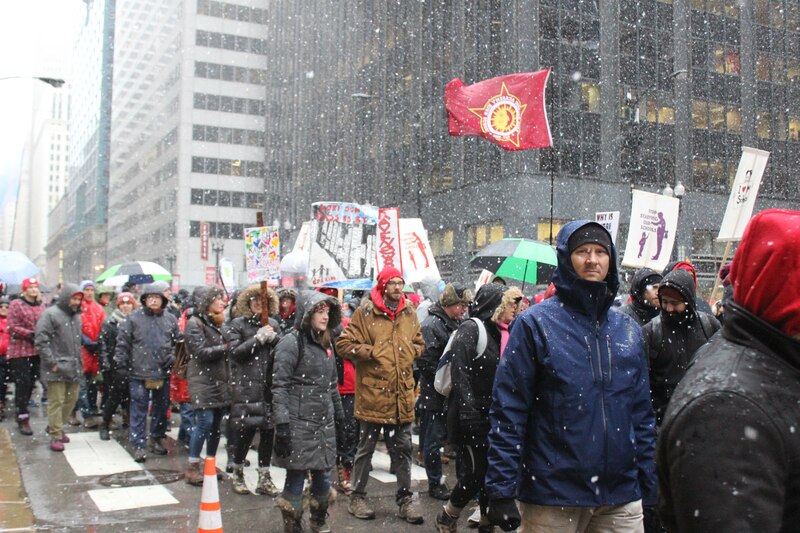
Former U.S. Secretary of Education Arne Duncan alluded to that strike in his recent endorsement of Vallas — arguing that the CTU went to war with Lightfoot after she defeated the union’s preferred candidate for mayor in 2019. The teachers union has been clear in their dislike for Vallas, highlighting what they say is a “record of failure” and a “path of destruction” he’s left behind in the public school systems he led.
Vallas has not been shy about his disagreements with the teachers union. But he said the 2019 strike and the COVID-related work stoppages could have been avoided and has vowed to bargain in “good faith.”
Deciding how to measure school and student performance
Early in the pandemic, district officials halted the annual school ratings based on test scores, attendance, and other metrics. And last spring, district leaders announced the old system, known as the School Quality Rating Policy, would no longer exist.
The decisions have prompted a broader conversation about how schools should be measured — or if they should at all — that will continue under the next mayor.
For some, the pause on high-stakes accountability has been a welcome reprieve. The teachers union and others have argued it put too much emphasis on test scores and penalized schools serving high-need populations. A low rating could turn off prospective new families, contributing to a cycle of declining enrollment and continued disinvestment.
But for others, the lack of a system for measuring quality can leave parents and the public wondering: How are students and schools doing?
For two years, the district, the union, and several stakeholders, including Kids First Chicago, have been working together to develop a new, more “holistic” accountability policy. Hal Woods, the chief of policy at Kids First Chicago, said the school board is expected to vote on it next month.
“A new mayor might come in and say, pump the brakes,” Woods said. “Obviously, we hope not.”
It’s not likely Vallas would do that. He created Chicago Public Schools’ first accountability system — putting more than 100 schools on probation for poor academic performance before the federal No Child Left Behind law required districts to do so.
Johnson is likely to be more skeptical. He has said the district does not need its own rating system since the state already has one, and has said schools need more support and resources, not accountability.
The new policy, Woods said, aims to do just that.
“It should be a tool to diagnose where extra support is needed and what that support looks like,” Woods said. “That could be financial, it could be other forms of support.”
Chicago students and schools are facing a pivotal moment. Test scores have fallen. Mental health concerns are rising, particularly among young girls. Additional social workers, counselors, and school staff worry the extra resources still won’t be enough.
The city’s next mayor will have to face these challenges — and decide how to respond.
Mauricio Peña contributed reporting.
Becky Vevea is the bureau chief for Chalkbeat Chicago. Contact Becky at bvevea@chalkbeat.org.

